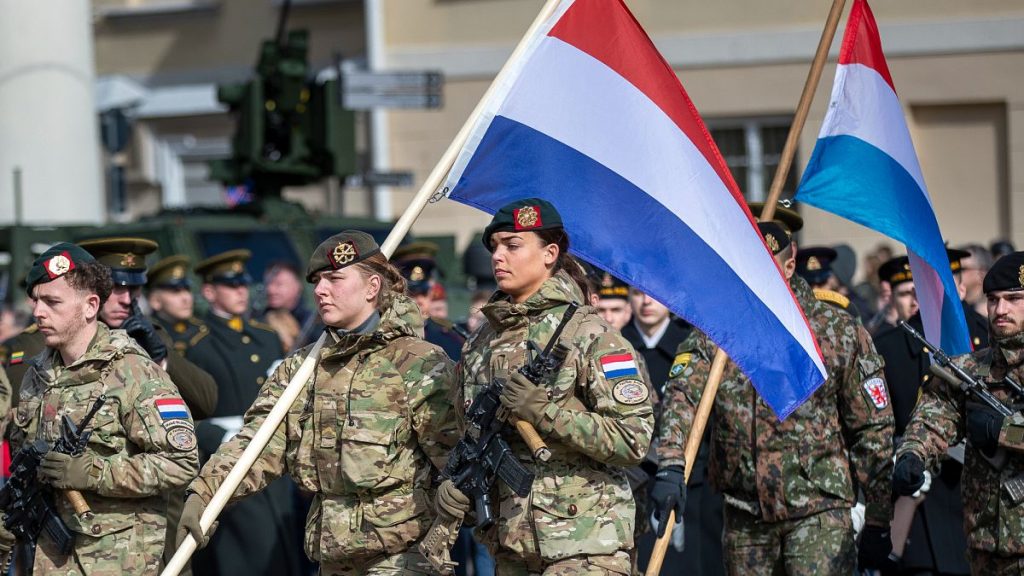In response to escalating geopolitical tensions, the Dutch government has announced plans to significantly increase the personnel in the military from the current strength of 70,000 up to 200,000 by 2030. The announcement, made by the Ministry of Defence and articulated through State Secretary for Defence Gijs Tuinman, highlights a pressing need for the Netherlands to enhance its self-reliance in defense capabilities. The increase in military personnel is part of a broader strategy to adapt to changing global security dynamics, particularly concerning threats posed by neighboring countries like Russia.
| Article Subheadings |
|---|
| 1) Overview of Military Expansion Plans |
| 2) The Official Communication |
| 3) Recruitment Strategies for Additional Personnel |
| 4) The Context of Increased Defense Spending |
| 5) Implications for the Future of Dutch Defense |
Overview of Military Expansion Plans
The decision to expand the Dutch military is a response to a changing security environment characterized by heightened fears, particularly around Russian aggression and shifting geopolitical alliances. With plans to grow personnel to 200,000 by 2030, this initiative represents one of the most significant transformations in the Netherlands’ defense posture in decades. The increase aims not only to boost military capability but also to ensure that the armed forces are structured effectively to handle various types of missions. The Dutch government acknowledges that a well-rounded military force is necessary to address both current and future threats.
The Official Communication
The announcement came via a letter from Gijs Tuinman, sent to the House of Representatives, where he outlined the urgent need for the Netherlands to bolster its defense capabilities. Tuinman specified that defense policy is undergoing a “major change,” emphasizing that the nation must be equipped to “stand on its own two feet.” Such statements underline a commitment to enhancing national security and establishing a militarily capable force that can operate independently in the context of international alliances.
Recruitment Strategies for Additional Personnel
To achieve the ambitious target of increasing the military workforce, the Dutch government plans to engage young individuals by sending out surveys to those who are called upon at the age of 17. These surveys are designed to gauge interest in military service, which remains voluntary for now but may evolve into a more structured recruitment process that could include mandatory interviews and medical examinations. Furthermore, there will also be a focus on ramping up the number of reservists, who supplement the full-time military by serving part-time while pursuing civilian careers or education. Such measures aim to integrate a broader base of personnel into the armed forces, ensuring diversity in skills and backgrounds.
The Context of Increased Defense Spending
Recent geopolitical events have reignited concerns about security within Europe, prompting nations like the Netherlands to reassess their military capabilities. The fears regarding Russia’s military posture and uncertainty about future U.S. support have further fueled calls for increasing defense expenditures across European Union (EU) member states. This trend is reflected in the Netherlands’ strategic decision to significantly ramp up military investment, pursuing an enlarged force structure to meet both established and emerging security threats efficiently. The government recognizes that rapid response capabilities will be critical for the defense of national and regional interests.
Implications for the Future of Dutch Defense
As part of its broader strategy, the Dutch government aims to have a structure within its armed forces that allows for both peacetime readiness and military engagement. By 2027, the objective is to have the armed forces comprehensively organized into operational units that can respond to a variety of scenarios, which is a critical pivot in their defense policy.
Tuinman noted that this effort is not merely about increasing numbers but also about ensuring that the right individuals with the necessary skill sets are positioned in appropriate roles. This strategic depth is integral to the development of a military that is not only numerically superior but also effective in various operational environments.
| No. | Key Points |
|---|---|
| 1 | The Dutch military personnel is set to increase from 70,000 to 200,000 by 2030. |
| 2 | State Secretary for Defence Gijs Tuinman highlighted the need for enhanced self-reliance. |
| 3 | New recruitment surveys will target young individuals to stimulate military interest. |
| 4 | The increase is motivated by rising geopolitical tensions, especially regarding Russia. |
| 5 | by 2027, the military aims to establish a structured force capable of various operational deployments. |
Summary
The Dutch government’s decision to significantly enlarge its military personnel reflects a proactive stance in addressing evolving security threats in Europe. With a structured approach to recruitment and training, the Netherlands aims to build a robust armed force that can operate independently and in conjunction with NATO allies. This initiative underscores the changing landscape of security and defense policies in a region facing uncertainty and necessary adaptations amidst ongoing geopolitical challenges.
Frequently Asked Questions
Question: Why is the Dutch military expanding its personnel?
The expansion is a response to escalating geopolitical tensions and the need for the Netherlands to ensure that it can provide for its own defense in light of uncertain external support.
Question: What is the timeline for increasing military personnel?
The Netherlands aims to increase its military personnel to 200,000 by the year 2030, with strategic adjustments expected to take place by 2027.
Question: How will the government recruit new military personnel?
Recruitment will include sending surveys to young individuals at age 17 to gauge interest and may evolve to include mandatory interviews and medical assessments in the future.
